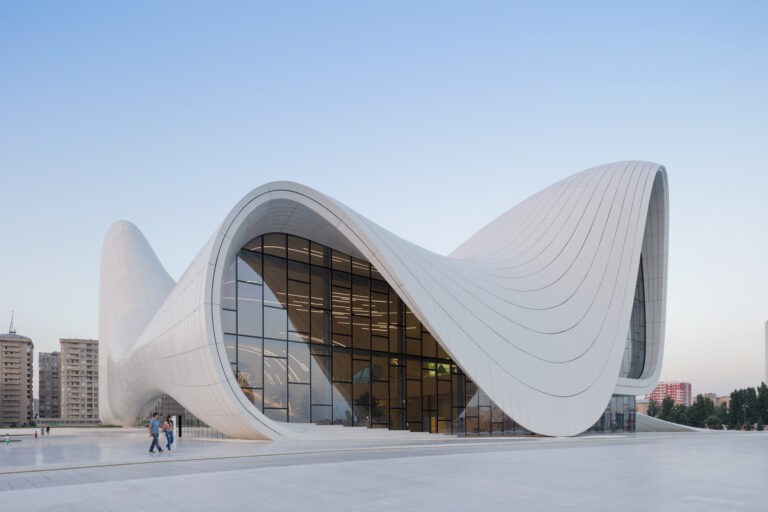
Glass-Fiber Reinforced Concrete – Advantages and Its Applications
There has been a greater emphasis on producing high-performance concrete goods by incorporating various fibers in varying proportions. Glass, carbon, polypropylene, and aramid fibers enhance concrete properties such as tensile strength, fatigue resistance, durability, shrinkage, impact resistance, and erosion resistance. Because of these properties, fiber-reinforced concrete has been used for a variety of tasks. Glass fiber-reinforced concrete is one such product. (GFRC). It is made of Portland cement, fine aggregate, water, acrylic polymer, alkali-resistant glass fiber reinforcement, and chemicals. GFRC is a lightweight, long-lasting material that can be cast into virtually any form, color, or texture. It is primarily used in building facade panels and artistic precast concrete. GFRC has greater flexural rigidity than unreinforced concrete.

Due to its versatility, strength, and relative ease of manufacture, glass-fiber-reinforced concrete (GFRC) has increased in favor in recent years. Because GFRC is thinner and much lighter than thicker traditional reinforced concrete, Fiber content, composite density, fiber orientation, fiber length, and cure type are the main variables influencing GFRC strength properties. Fiber strengthening has an effect on all of these.
GFRC production methods:
There are various production methods for GFRC manufacturing they are:
The spray-up procedure: it creates the mortar separately from the fibers, which are only mixed at the spray gun's jet. The glass fiber filaments are cut to size within the spray gun using a fiber-free matrix. The forms are sprayed with the fluid concrete slurry. A specialized spray gun is used to apply the fluid concrete slurry while also cutting and spraying long glass fibers from a continuous spool. Because of the large fiber load and long fiber length, spray-up produces a very strong GFRC.

The pre-mixture procedure: It begins with producing a cement matrix, followed by mixing pre-cut glass fibers. Pre-mix GFRC production may include several processes, such as injection and vibration, pressing, or concreting. The premix method is further subdivided into different manufacturing techniques such as spray premix, cast premix, pultrusion, and hand lay-up.
Filament Winding: Before being wound onto a mandrel, a fiber roving strand passes over several round steel bars positioned below the level of a specifically modified mortar mix. Various continuous fiber cement-based composites comprising unidirectional lamina, cross-ply, and angle-ply laminates can be manufactured with a typical AR glass content.
Filter-press process: In this process, a wet, fibrous mix with an excess of water is first created. The mixture is then packed into a mold with a perforated plate at the bottom. The mold foundation is covered with filter material. The mixture is then pressed by a top plate, which squeezes out the excess water through the mold’s base and a tiny gap between the top plate and the mold's sides. The filter press method is well adapted for the mass production of simple or complex-shaped products.

Advantages of GFRC
Since GFRC is reinforced internally, there is no need for other kinds of reinforcement, which can be difficult to place in complex shapes. Its advantages include:
- A high tensile strength than steel
- Non-combustible so it will not burn
- It is thinner and stronger than plain concrete.
- Lightweight and tough materials also reduce the transportation expense
- Allow for flexibility in design and reduce the impact on the environment
- Improved strength, increases the capacity to bear seismic loads
- Less vulnerable to weather effects and it is more resistant to freeze-melting than normal concrete
- High flexural strength as high as 4000 psi and it has a very high strength-to-weight ratio
- Expensive equipment is not needed for poured or vibrated GFRC with a face coat
- Doesn’t crack easily-it can be cut without chipping
- Uses less cement than equivalent concrete and also often uses significant quantities of recycled materials
- GFRC concrete can be cast in thinner sections and is therefore as much as 75% lighter than similar pieces cast with traditional concrete

GFRC can be used anywhere a lightweight, strong, weather-resistant, attractive, and fire-resistant substance is needed. GFRC can be used on spandrels, column covers, soffits, cornices, brackets, quoins, handrails, pilasters, copings, domes, and other architectural elements. Site furniture, planters, bollards, urns, tables, and waterfalls are examples of landscape and hardscape use. GFRC is also used in historical restorations and renovations to replicate terra-cotta, carved stone, and even wood structure ornaments.
Its applications include the following:
- Architectural Cladding
- Landscaping
- Roofing
- Walls and windows
- Building Renovation
- Flooring and foundations
- Modular building:
- Bridges and tunnels
- Water and Drainage:

Product makers are actively focused on research and development for the production of glass fibers for reinforcing purposes, with an increased emphasis on the production of advanced reinforcing glass fibers with various sizes and project requirements. Rising demand for glass fibers in commercial, residential, and civil construction is expected to boost market development. Product advantages such as strong tensile, flexural, and compressive strengths are expected to drive demand for it as a reinforcement material in concrete. This increases the strength of the concrete, increasing its demand in the building of countertops, fireplace surrounds, and so on. In the residential building sector, there is also an increase in demand for remodeling and renovation activities, which is driving up demand for glass fiber-reinforced concrete.
What a beautifully designed building, absolutely love it's curves...!